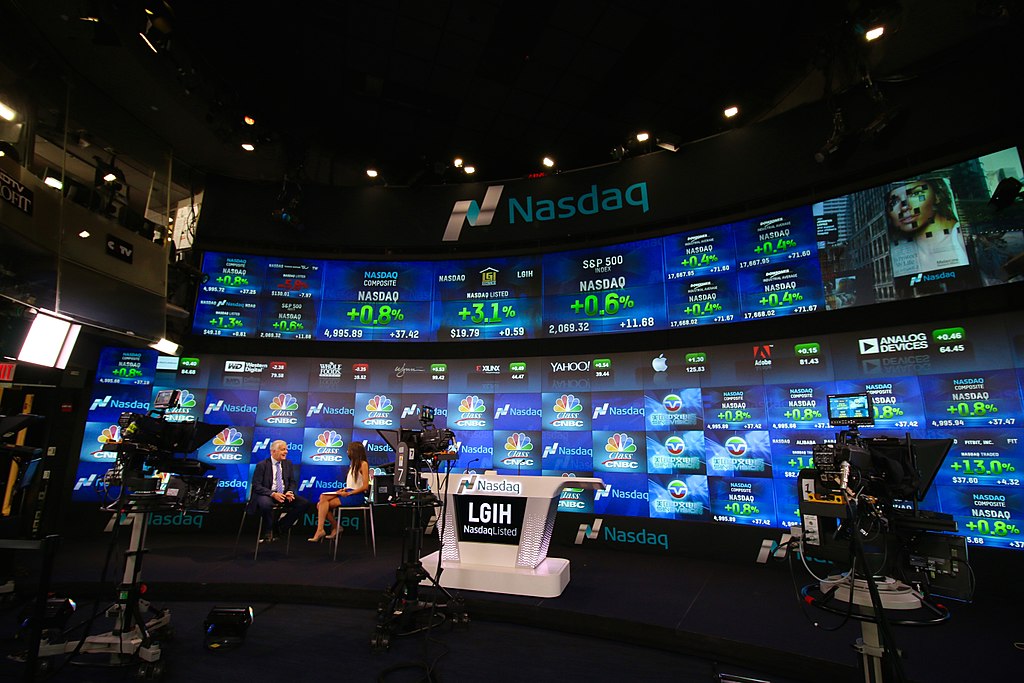Wall Street suffered its steepest two-day drop since the pandemic, as mounting global trade tensions and sweeping tariffs imposed by the Trump administration triggered a major market selloff. The Nasdaq Composite officially entered a bear market Friday, while the Dow Jones Industrial Average confirmed a correction.
Over Thursday and Friday, the Dow fell 9.3%, the S&P 500 dropped 10.5%, and the Nasdaq plunged 11.4%. The selloff wiped trillions off U.S. company valuations, with the CBOE Volatility Index hitting its highest level since April 2020.
Investor panic surged after Trump raised tariffs to their highest level in over a century, prompting concerns over a looming global recession. Global responses added fuel to the fire—China’s finance ministry announced a 34% tariff on all U.S. goods starting April 10, while leaders from the UK, Australia, and Italy discussed retaliation.
On Friday alone, the Nasdaq dropped 962.82 points (5.82%) to 15,587.79, the Dow fell 2,231.07 points (5.50%) to 38,314.86, and the S&P 500 slid 322.44 points (5.97%) to 5,074.08—its lowest close in 11 months. Weekly losses stood at 10% for the Nasdaq, 9.1% for the S&P 500, and 7.9% for the Dow.
Fed Chair Jerome Powell warned the tariffs could spark inflation and slow growth, possibly influencing future monetary policy. The 10-year Treasury yield dipped below 4%, adding pressure to bank stocks, with the S&P Banks index dropping 7.3%.
All 11 S&P sectors fell over 4.5%, with energy leading losses, down 8.7% as U.S. crude slid 7.3%. Tech and China-exposed stocks plunged, including Apple (-7.3%), Alibaba, and JD.com (both down over 7.7%). Chipmakers, heavily reliant on U.S.-China supply chains, dropped another 7.6%.



 China Hits Back with 125% Tariffs as US Trade War Escalates
China Hits Back with 125% Tariffs as US Trade War Escalates  Nikkei Tumbles 5% Amid Escalating U.S.-China Trade Tensions
Nikkei Tumbles 5% Amid Escalating U.S.-China Trade Tensions  Trump tariff backflip brings a US trade war with China into the crosshairs
Trump tariff backflip brings a US trade war with China into the crosshairs  Oil Prices Drop Amid U.S.-China Tariff Tensions, Demand Concerns
Oil Prices Drop Amid U.S.-China Tariff Tensions, Demand Concerns  U.S. and Vietnam Begin Trade Talks After Tariff Pause
U.S. and Vietnam Begin Trade Talks After Tariff Pause  Trump Pauses Tariffs Amid Market Turmoil, Keeps Pressure on China
Trump Pauses Tariffs Amid Market Turmoil, Keeps Pressure on China  China Allegedly Dumps U.S. Treasuries Ahead of Trump’s 104% Tariff
China Allegedly Dumps U.S. Treasuries Ahead of Trump’s 104% Tariff  Samsung Faces U.S. Tariff Threat Amid Vietnam Manufacturing Dependency
Samsung Faces U.S. Tariff Threat Amid Vietnam Manufacturing Dependency  Asian Chip Stocks Surge as U.S. Suspends Tariffs, Eases Trade Tensions
Asian Chip Stocks Surge as U.S. Suspends Tariffs, Eases Trade Tensions  Mitsubishi Veteran Kazuyuki Masu Nominated to Bank of Japan Board Amid Policy Shift
Mitsubishi Veteran Kazuyuki Masu Nominated to Bank of Japan Board Amid Policy Shift  China Limits Hollywood Film Imports Amid Tariff Retaliation, Impact Minimal
China Limits Hollywood Film Imports Amid Tariff Retaliation, Impact Minimal  Citi Cuts Japan 2025 Growth Outlook Amid Rising U.S. Tariffs and Global Tensions
Citi Cuts Japan 2025 Growth Outlook Amid Rising U.S. Tariffs and Global Tensions  U.S. Recession Odds Drop as Trump Delays Tariff Plan
U.S. Recession Odds Drop as Trump Delays Tariff Plan  Markets Flock to Safe Havens as Trump Escalates Tariffs on China
Markets Flock to Safe Havens as Trump Escalates Tariffs on China 
































For details check ——-⫸ https://Www.HighProfit1.Com